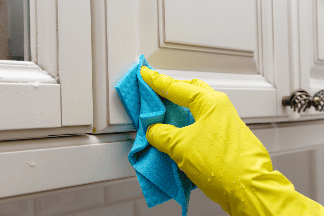Why invest in student housing?
By Michael Currie, Author of Landlord by Design 2: Moves to Make and Paths to Take for Real Estate Investing Success

If you live near any postsecondary institutions, you will have demand for student housing. It can be a great way to maximize revenue from a property.
Student housing is a broad topic, for the intent of this article, I am going to stick to the rooming house type model.
When you rent a house by the room you can use spaces such as the living room or dining room and block them off as separate rooms, also if the house has a dry basement, it can be rented as a room.
A regular 4 – bedroom house that might rent for $2500 per month could end up being a 7-room student housing rental, renting for $700 per room for a total of $4900/mo.
In addition, revenue can come from coin-operated laundry (approx. $200 /mo.), Parking spaces $75 X 2 = $150/mo.), and storage in the form of a garage, attic, or basement (approx. $200/mo).
That all adds up to $5450 per month VS $2500 (more than double).
So, why wouldn’t you do this with all your rentals?
Before you start chopping your rentals up into individual rooms, you are going to need to consider some of following:
Additional Expenses
Increased cost of Property management
Increased and likely all-inclusive Utilities
Cleaner – Best practice to have a cleaner to clean bathrooms, kitchens, & common areas.
Snow and lawn Care
Increased Insurance Cost
Higher Interest rates – Often lenders charge higher rates for these types of properties.
Writing Complex Leases – you may need to hire an expert
You will also need to make sure your student rental is local code & by-law compliant
Student rooming houses are not popular in many jurisdictions. Most student-rooming houses are required to follow a special set of rules & requirements that are different from single-family dwellings.
You will need to know about any restrictions on renting by the room in your area before you purchase or set up a student rooming house rental.
I recently saw an ad for a student rooming house that said they rented 8 rooms. In this particular area the maximum room rentals allowed would be 5, so if purchased based on an 8-room revenue model and a by-law enforcement officer got involved, it would turn into a 5-room house, which may make it cash flow negative.
By-law change in my city
I give credit to an acquaintance who at the very least influenced the implementation of a restrictive by-law in my home city regarding the amount of students that can occupy an apartment or house.
He was buying two-unit properties. He then jacked them up and put a new basement with rooms and a bathroom, then added another floor to the property. He called them super duplexes and each floor had 4 rooms, so after construction, he turned two 3-bedroom apartments into a two-unit property with 16 rooms.
The neighbors of these super duplex’s started to complain about noise, garbage, rodents, etc. As is often the case in a university and hospital district you have professionals and their families living side by side with students.
Long story short a by-law that does not allow more than 5 unrelated people to live in a single unit was put in place. This by-law reduced the capacity of these super duplex’s down to 10 rooms per building. Which dramatically negatively impacted the cash flow of these properties.
Communication is King when it comes to renting to students
I reviewed the previous room agreements from the seller of a property we were buying. I said to my wife, wow, the list of rules almost sounds rude. I was so young and naïve back then. Most tenant issues are caused by the tenant pushing boundaries due to grey areas, this is amplified when you get into student housing. You need to be 110% clear on your building rules and if you are dealing with co-signers as parents you need to be clear with them as well.
A best practice can be to require a credit card number from the parental co-signer to be kept on file in the event their child does any damage.
Some student damage you should expect in a student property would be burnt countertops, window screens, water damage in bathrooms or from windows being left open, broken door handles, and prepare for clogged toilets.
You will also need to be clear on rules around guests, sometimes a “guest” could be perceived by the other tenants as a freeloader.
Quiet time guidelines are important as well, we like to use 11 pm – 6 am.
Smoking can also be a problem, especially weed. For some reason, many people who smoke weed do not realize how bad it smells or how far the smell travels. If your property is smoke-free, make sure you are clear on what that means.
It is important to have all the rules laid out super clear and signed off on at the lease signing. Go over them with each tenant.
To sum it up
Providing housing to students can be a great way to increase the revenue of a property. You just need to have awareness of all listed above and a great property management plan.
About the Author


Michael P. Currie is a landlord, property manager, author, and owner of the company Landlord by Design. Based in Canada, Michael got his start in the early 2000s as an investor flipping houses, and by the end of 2009, he was using a buy-and-hold strategy with his investments. After discovering a need for property management education, Michael started the Landlord by Design blog in 2015 to offer guidance and share his expertise. Learn more at www.landlordbydesign.com.















 Accessibility
Accessibility